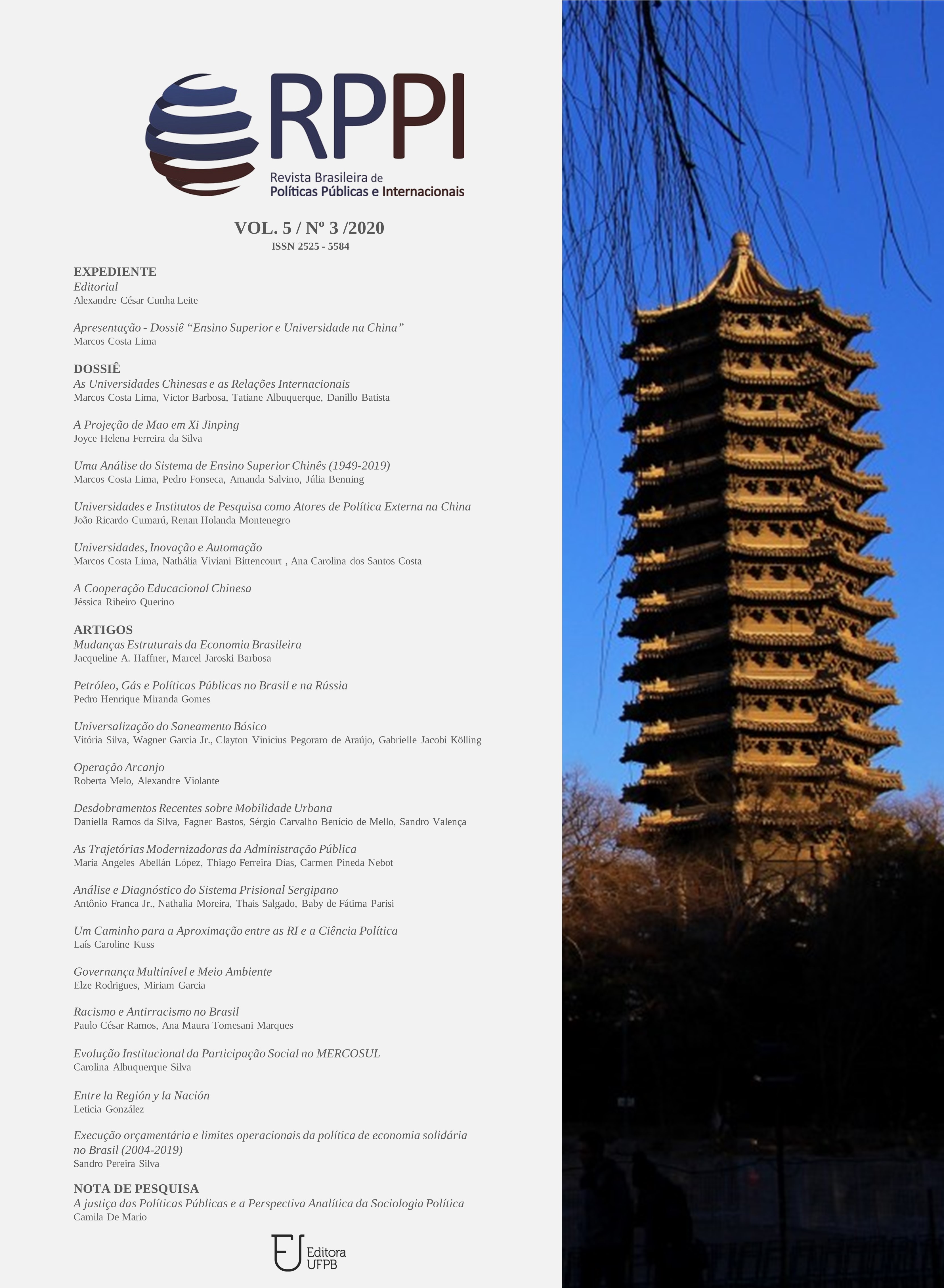Structural Changes in the Brazilian Economy
the China factor as a driver of national deindustrialization
DOI:
https://doi.org/10.22478/ufpb.2525-5584.2020v5n3.54176Keywords:
Deindustrialization; Foreign policy, Brazil.Abstract
The international economy has been marked by economic globalization, since the 1970s. This process took place through global productive and financial internationalization. Such phenomena are linked to the beginning of the transfer of the manufacturing industry to Asia. In other words, they are directly related to the relevant changes in the global production structure; which led to the end of local value chains and the rise of global value chains (CGVs), thus representing the productive face of economic globalization. In this context, the Brazilian economy undergoes a significant structural change in the last three decades. In the 2000s, Sino-Brazilian relations intensified. Thus, this article aims to analyze how this process begins, the influence of the Chinese economy in this change and how the formulation of foreign policy between the years 2003 to 2015 was used to face the structural change underway in Brazil. It was found that measures were taken to stimulate the industrial sector, but given the complexity of the phenomenon, structural change has advanced.
Downloads
Published
Issue
Section
License
Autores que publicam nesta revista concordam com os seguintes termos:- Autores mantém os direitos autorais e concedem à revista o direito de primeira publicação, com o trabalho simultaneamente licenciado sob a Licença Creative Commons Attribution que permite o compartilhamento do trabalho com reconhecimento da autoria e publicação inicial nesta revista.
- Autores têm autorização para assumir contratos adicionais separadamente, para distribuição não-exclusiva da versão do trabalho publicada nesta revista (ex.: publicar em repositório institucional ou como capítulo de livro), com reconhecimento de autoria e publicação inicial nesta revista.
- Autores têm permissão e são estimulados a publicar e distribuir seu trabalho online (ex.: em repositórios institucionais ou na sua página pessoal) a qualquer ponto antes ou durante o processo editorial, já que isso pode gerar alterações produtivas, bem como aumentar o impacto e a citação do trabalho publicado (Veja O Efeito do Acesso Livre).




_.jpg)






.png)


.jpg)
_.png)
